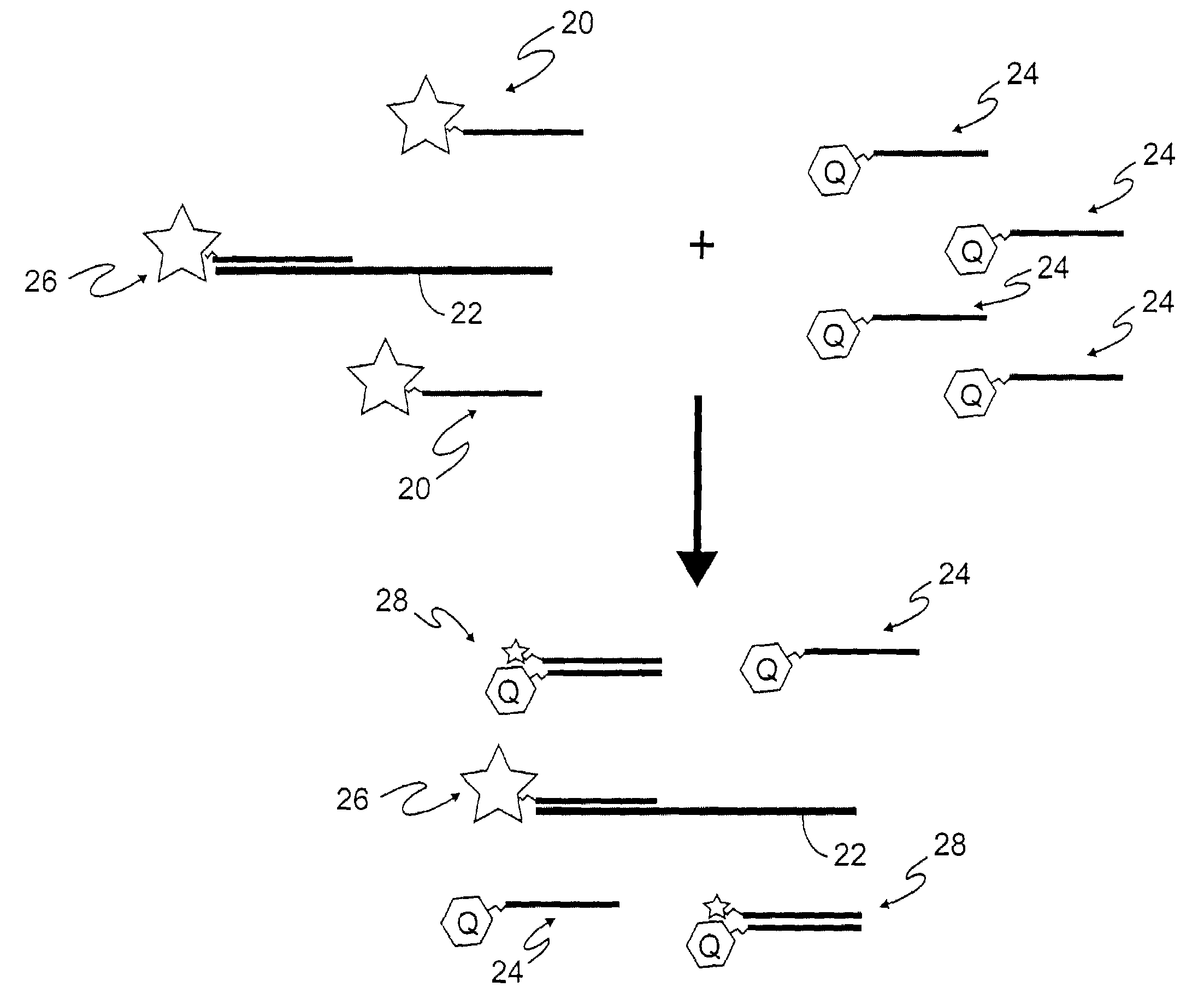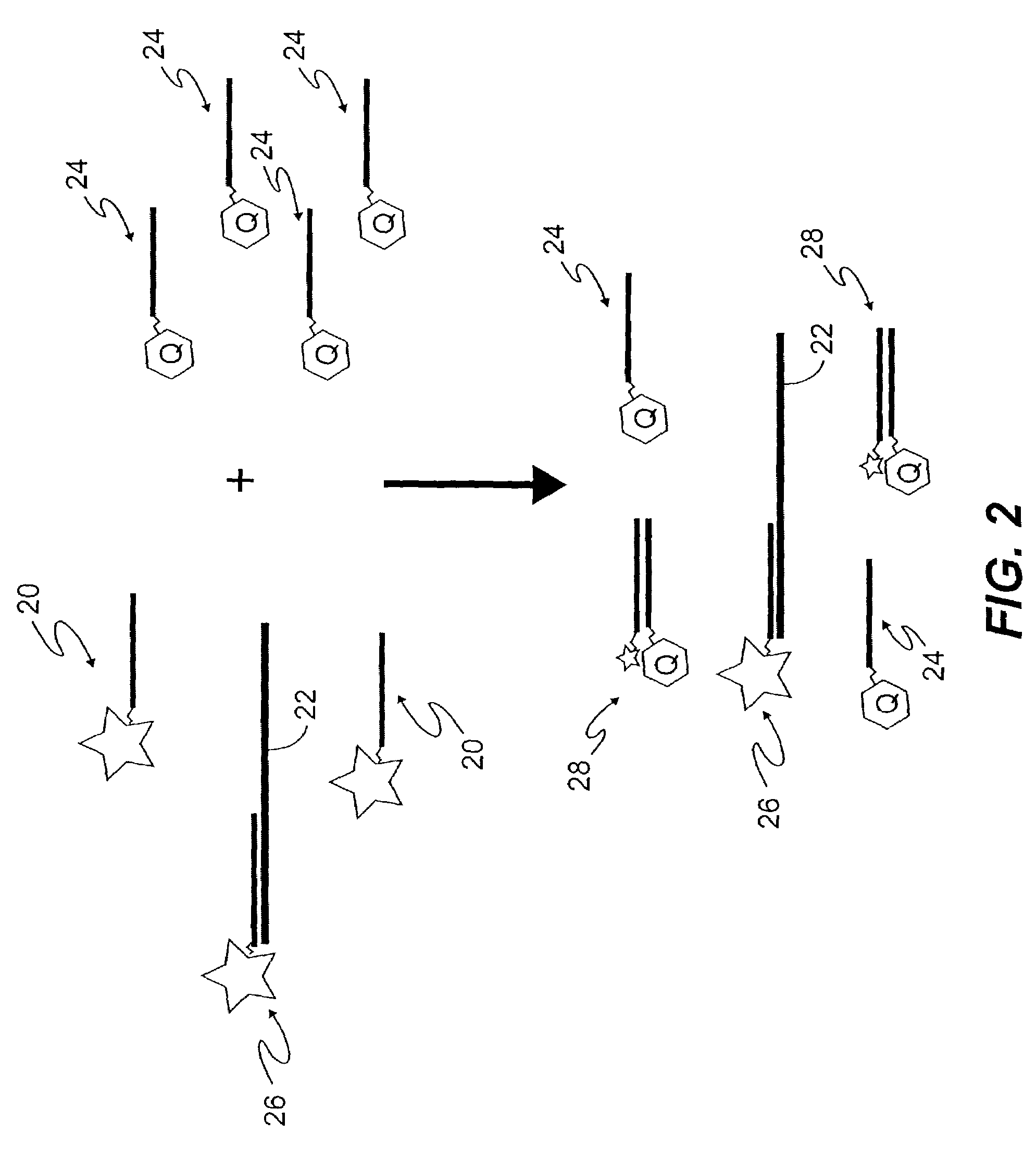Quenching methods for background reduction in luminescence-based probe-target binding assays
- Summary
- Abstract
- Description
- Claims
- Application Information
AI Technical Summary
Benefits of technology
Problems solved by technology
Method used
Image
Examples
Embodiment Construction
[0025]In accordance with the present invention as illustrated in FIG. 1, background emission from unbound, luminescent-labeled probes is reduced in luminescence assays. As is well known, a probe molecule is a luminescent molecule that binds specifically to a target 10 that is to be detected. The presence of target 10 is sensitively determined by the detection of luminescence from the luminescent adducts formed by the binding of probes 12 to target 10. However, background emission from unbound probe molecules 12 limits the sensitivity of such assays. In accordance with the present invention, as shown in FIG. 1, luminescence from unbound probes 12 is quenched by the addition of another molecule containing a quencher 14, referred to here as a quenching capture reagent, that binds specifically to the unbound, luminescent-labeled probes 12. Binding 16 of a quenching capture reagent 14 to a luminescent probe 12 brings the quencher moiety of the capture reagent 14 into proximity with the l...
PUM
| Property | Measurement | Unit |
|---|---|---|
| Concentration | aaaaa | aaaaa |
| Fluorescence | aaaaa | aaaaa |
| Luminescence | aaaaa | aaaaa |
Abstract
Description
Claims
Application Information
 Login to View More
Login to View More - R&D
- Intellectual Property
- Life Sciences
- Materials
- Tech Scout
- Unparalleled Data Quality
- Higher Quality Content
- 60% Fewer Hallucinations
Browse by: Latest US Patents, China's latest patents, Technical Efficacy Thesaurus, Application Domain, Technology Topic, Popular Technical Reports.
© 2025 PatSnap. All rights reserved.Legal|Privacy policy|Modern Slavery Act Transparency Statement|Sitemap|About US| Contact US: help@patsnap.com



